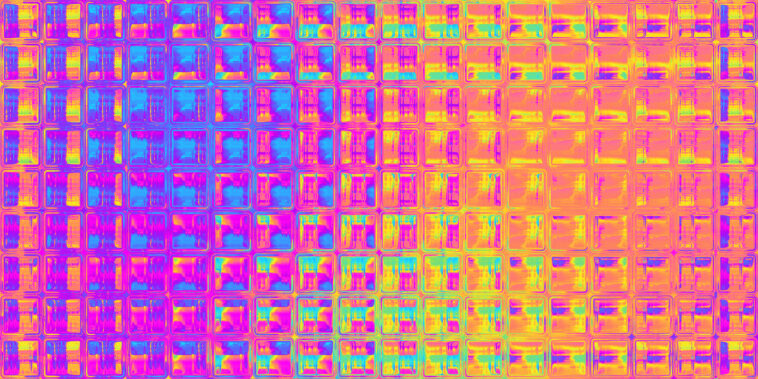New Research Suggests That Magic Mushrooms Could Yield Lasting Improvements Among Individuals With Color Vision Deficiency (CVD)

Researchers from the Cleveland Clinic in Ohio recently published a case report analyzing the positive effects that psilocybin– also known as magic mushrooms– can have on color blindness.
The team first discussed some implications gleaned from a single vision improvement self-study reported by a colleague. Then, they cited other past reports and showed how a stronger understanding of psychedelic applications in therapeutic settings is needed.
Previous reports have suggested that people with color blindness– or color vision deficiency (CVD)– benefit from using psilocybin or lysergic acid diethylamide (LSD) to improve color vision.
However, there is still a scarcity of scientific evidence backing up these claims since research surrounding these drugs is very restricted.
Three different types of photoreceptors, also known as cones, are critical for color vision. These cones are retinal photoreceptors that have light-sensitive pigments and sense the colors blue, red, and green. And the absence of even just one of these pigments will cause color blindness.
Red-green CVD is the most common form of CVD and refers to difficulty distinguishing between green and red. This condition is usually inherited and occurs in 0.5% of women and 8% of men.
Individuals with CVD only perceive about 10% of color variations and hues as opposed to those with normal color vision. And navigating life with color blindness can be extremely challenging.
Graphics, maps, and signs can be indistinguishable. Cooking and getting dressed may be difficult, and certain career choices where color sight is required could be restricted.
Right now, there is no color blindness cure, either. However, there have been some viable therapies– including wearing specific color blindness glasses that selectively filter certain wavelengths of light to make red and green frequencies distinct.

Unleashed Design – stock.adobe.com – illustrative purposes only
But in the recently reported case, one individual living with red-green CVD decided to take a different route.
The subject self-administered an examination known as the Ishihara Test to determine the duration and degree of color vision improvement after taking five grams of dried psilocybin magic mushrooms.
The data showed partial color vision improvement, with the gains peaking at eight days post-psilocybin treatment. Then, the effects lasted for at least eight more additional days.
The subject disclosed that they had previous experiences with psychedelics. In the past, they reported using MDMA once and psilocybin mushrooms twice. Additionally, the subject had orally taken LSD five times and inhaled dimethyltryptamine (DMT) seven times.
Following these prior experiences, the individual reported color vision improvement that lasted for months.
Prior to ingesting the magic mushrooms, the individual administered the Ishihara Test by themselves. This test consists of various mosaic dot graphics that vary in size, hue, and color.
The cards were designed to conceal specific test images from individuals with color blindness that would otherwise be visible to individuals with color vision.
So, during the subject’s baseline test, they reported a score of 14 from plates one to 21– which indicated mild red-green blindness. Another set of four cards also indicated a different version of CVD known as Deuteranomaly, which causes greens to appear redder.
Then, the subject used psilocybin and reported that colors intensified. Although, the individual’s score only slightly improved to 15 when the test was self-administered again 12 hours post-psilocybin use.
After 24 hours post-psilocybin use, however, the individual’s score rose to 18– which was just one point above the Ishihara Test’s threshold for normal color vision classification.
Still, the subject’s test score did not peak until day eight, when it reached 18. And for four months following psilocybin administration, the individual reported remaining within the normal vision range.
The research team suggested that the visual phenomena induced by psychedelic use are likely the result of brain activity alterations as opposed to the psychedelics’ direct impact on the peripheral eye and retina.
Due to the time delay from psilocybin use to the onset of color vision, the psilocybin could have catalyzed a color interpretation learning process– potentially altering visual region connectivity.
So, even though color blindness usually results from genetic defects, the researchers believe psilocybin may be a viable treatment avenue to explore.
“This case report suggests a single use of psilocybin may produce long-lasting partial improvements in CVD, despite this condition typically resulting from a genetic defect,” the authors concluded.
“This raises important questions about the possibility of psilocybin inducing durable alterations in visual processing in some people.”
Still, further research is needed to determine the underlying mechanism at play, as well as whether psilocybin could yield improvement in more severe cases of CVD.
To read the report’s complete findings, which have since been published in SAGE Journals, visit the link here.
If true crime defines your free time, this is for you: join Chip Chick’s True Crime Tribe
There Was Only One Woman Who Has Ever Received The Medal of Honor, And This Is Her Incredible Story
Here’s How You Can Fill A Raised Bed Without Spending A Ton Of Money
Sign up for Chip Chick’s newsletter and get stories like this delivered to your inbox.
More About:Science





